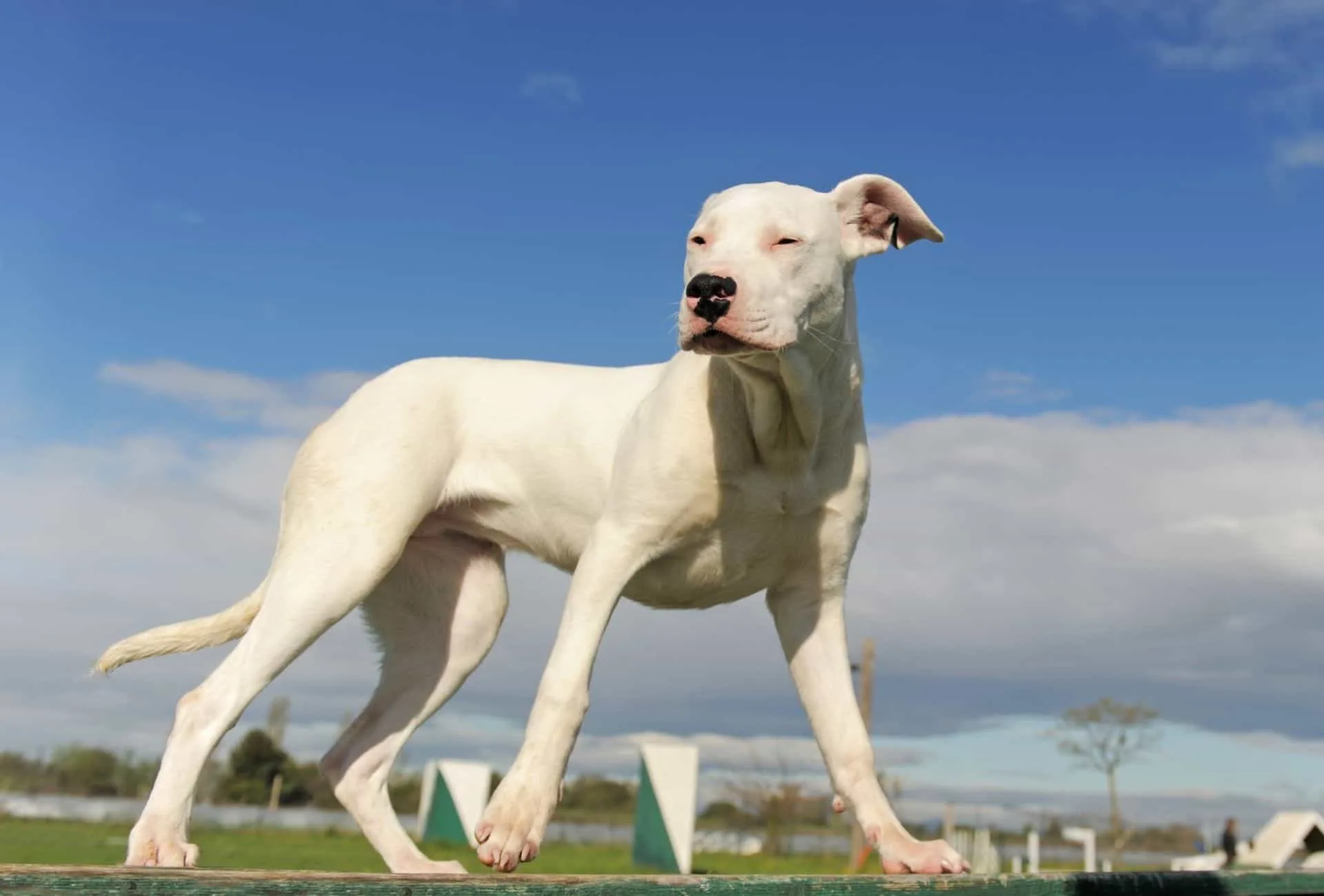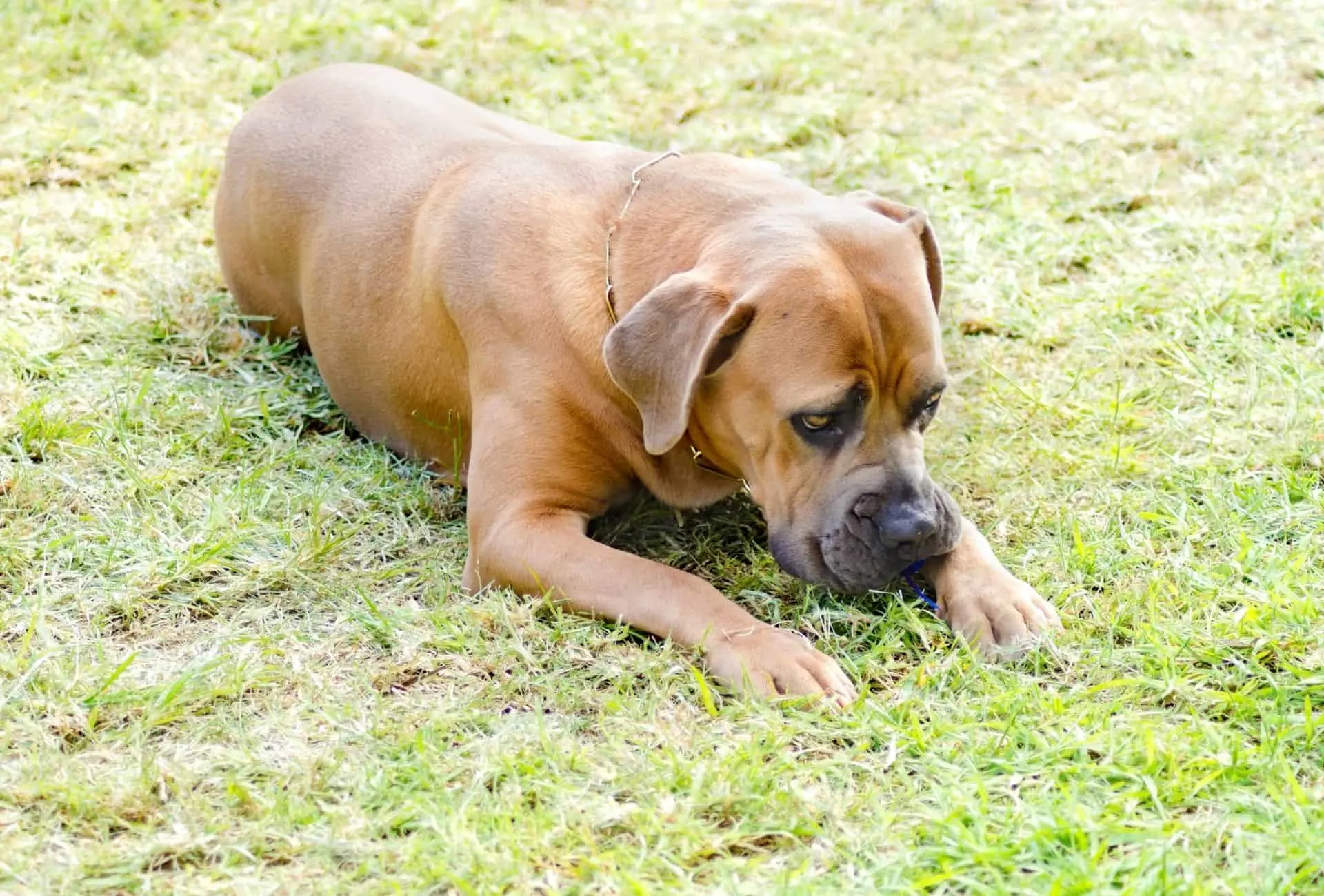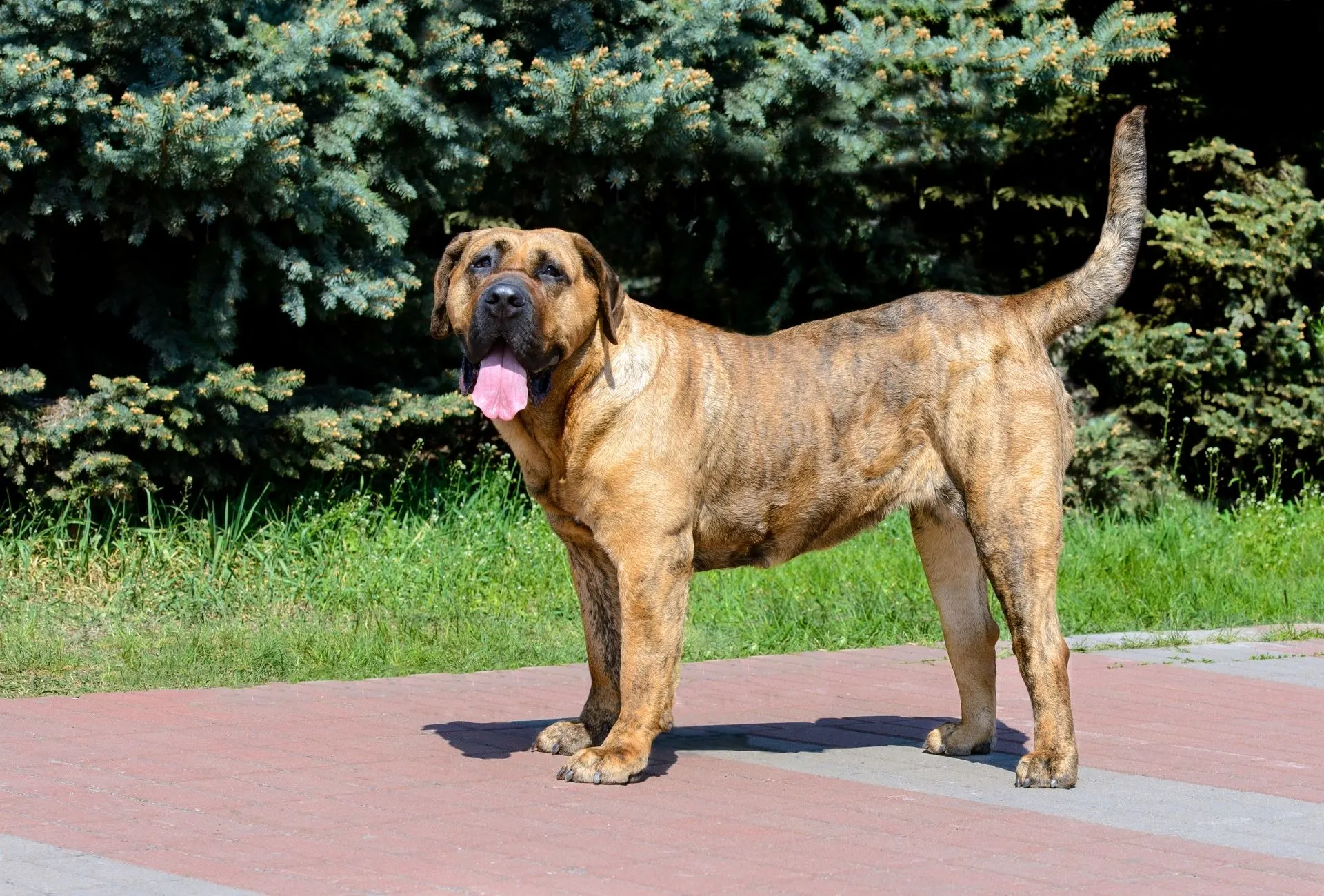Tough, muscular, and protective – that’s what you first think of when someone mentions these three breeds.
Their mean-looking faces plant fear in the enemy’s bones and warmth in the hearts of their owners.
The truth is these big boys and gals can be pretty huge lapdogs in the right hands.
But which one’s best for you? The Cane Corso or the Dogo Argentino? Or is the Presa your canine soulmate?
Let’s look at the characteristics of these dogs and what’s different between each breed so you can decide whether or not they fit your lifestyle (or just to catch an overall glimpse).
Cane Corso vs Dogo Argentino
Dogo Argentino is a fierce canine often used for hunting of big game, search and rescue, military work, and police work.
As much as they’re known to be great hunters, they can be turned into the perfect family dog with proper training and selection.
The Argentino was developed by Dr. Nores Martinez in 1928 in the Argentinean Cordoba region.
A lot of different breeds such as Cordoba Fighting Dog, Boxer, English Bulldog, and Great Dane among others contributed to the development.

Cane Corso is a working dog that loves to obey commands and was used as an overall protector in the past.
Occasionally, the police and the military train them, but there are a lot more Cane Corso dogs that are kept as family pets (and their popularity has surged in recent years).
The breed originated in Italy and got popular during the 1970s.
Ancient Cane Corsi heavily resembled the mastiff-type dogs and luckily, this breed didn’t go extinct as many others did.
Both are among the list of all 22 Mastiffs – hailing from Argentina and Italy respectively.
Size
Although the size of a full-grown Cane Corso and Dogo Argentino is give-or-take similar, Cane Corso males and females are slightly bigger. Both breeds are considered to be large dog breeds.
You can expect an adult Dogo Argentino to weigh between 80 and 100 pounds (36-45 kg) and have a shoulder height of 24-27 inches (61-69 cm).
The average weight of Cane Corso is 90-120 pounds (41-54 kg) and the males stand 25-27.5 inches (64-70 cm) high.
In both breeds, the females are noticeably smaller than the males.
A very important aspect of keeping either a Cane Corso or a Dogo Argentino is whether you live in an apartment or a house with a yard (or at the very least have access to parks, fields, forests, and so on.
For any large dog, it’s crucial to have enough space and exercise although some Cane Corsi or Dogo Argentinos could be considered Velcro dogs.

Apartment living isn’t ideal for these dogs because the outdoors has a positive effect on their mental and physical state.
It’s more likely for both Dogo Argentino and Cane Corso dogs to be happier out in the open.
Lack of exercise leads to unwanted behavior, and unwanted can mean complete destruction with these two breeds.
Even a toy breed dog can take vengeance on your furniture when you neglect their physical needs so imagine the outcome with these bored giants once they seek alternative amusement.
Temperament
Having a Dogo Argentino means you have a loyal watchdog that tends to become very territorial.
They will defend their families with whatever it takes if they feel threatened.
With the Argentino’s strong prey drive, it might be hard to keep him together with any other smaller pets you might have.
Cane Corso dogs are always ready to face any challenge mostly due to their vigorous temperament.
This characteristic is where guard dog ownership experience can be the deciding factor whether the Cane will turn out inappropriately aggressive or an excellent family guardian.
Because Cane Corso dogs are very intelligent and bossy, they will start to dominate the household when there is a lack of boundaries.
It’s more than obvious that the owner must provide stable leadership.
Dogo Argentino is an independent being that needs regular training and socialization to develop good character.
But keep in mind that even plenty of mental and physical stimulation isn’t a guarantee that they will be welcoming to other dogs or strangers.
You might encounter criticism with both these breeds, despite your dog possibly being well-trained.
Their intimidating appearance can be too much for some people and most dogs don’t react too well to panicking strangers so training is essential.
Recommended Reading: Are Cane Corsos Good With Kids?
Training and Exercise
The exercise needs of Cane Corsi and Dogo Argentinos are high and somewhat identical.
Daily exercise routines are a must for a Dogo Argentino. They have a lot of stamina and will need activities that impact their conditioning.
At the very least a healthy adult Cane Corso or Dogo Argentino must have an hour of exercise daily (verging on 2 hours) plus mental stimulation.
The daily amount of activities can be divided into two 30-40 minutes walks a day with an occasional game of fetch or tug-of-war.
They also make an ideal companion for hiking because they can walk in any terrain and will bond with you even more during the trip.
Athletic and muscular – the Cane Corso has high exercise requirements befitting their appearance.
Conditioning walks and jogs can be combined with canine sports and games for full effect on the dog’s well-being.
The relatively good dog attention span makes Cane Corsi great training candidates.
They are eager to please and once they learn something they tend to retain the knowledge.
Training a Dogo Argentino takes a bit more consistency.
They are intelligent, but also often mentioned to be stubborn dogs so the training procedure will be moderately easy.
The training of both dog breeds should start as early as possible at 8 weeks of age.
Start with easy training and basic commands before you move on to more complicated things.
Training the puppies will ensure theirs and other people’s safety in the future.
Cane Corso vs Presa Canario
When it comes to the Cane Corso vs the Presa Canario, they share a lot of similarities in appearance, temperament, and exercise needs.
Developed in the Canary Islands in the XIX century, the Presa Canario was primarily used as a farm dog to protect the livestock from predators.
Most of its traits are from Bardina Majero, now an extinct breed, and the English Mastiff.
The general appearance of a Presa Canario resembles that of the Cane Corso. Both are strong, muscular, and even have similar coat textures in some cases.
Because Cane Corsi have a wide variety of coat colors, only the brindle ones look similar.
Size
The average weight of full-grown Presa Canaria dogs is between 80 and 100 pounds (36-45 kg). These dogs can be 21 to 25 (55-65 cm) inches high at the shoulder line.
Although they’re significantly shorter than Cane Corsos (even shorter than Dogo Argentino) they’re more equal on the weight scale.

Temperament
The Canario is an affectionate and docile being.
Even though they have been bred for working purposes they can make great family companions and guardians at the same time.
Expect your Presa Canario to be alert at all times and defend you if necessary.
The dog is quiet most of the time and its occasional bark is very intimidating for other people and animals.
In nature, a Presa is distrustful of strangers but if the owner accepts them, the dog should accept them as well with the right amount of exposure and positive reinforcement.
Training and Exercise
If you can’t commit at least an hour of outdoor activities to your Presa Canario a day, you should reconsider getting this breed of dog.
They need plenty of daily exercise to spend all of that extra energy.
Two 30 minute walks a day is the minimum exercise time to keep the dog fit and away from destructive behavior.
Cane Corso and Presa Canario are pretty similar when it comes to exercise needs, except that the couch-potato breeding lines may be satisfied with usual walking/running/hiking most of the time.
The Canario needs to be trained and socialized from a very young age.
The owner must show consistency and leadership to avoid ending up with an aggressive and unsocial dog.
Unfortunately, Presa Canario is not that easy to train. Most people will even say that they are very, very hard to train.
Their outgoing and stubborn nature is hard to deal with, especially for people that have small to no experience in dog training.
When it comes to training, Cane Corsos are a lot more rewarding than Presa Canarios. On the other hand, a Presa Canario who hasn’t been trained often seems a lot calmer than a Cane Corso that lacks the proper training.
But then again, the Corso is just far more popular and you might just notice them ending up in the wrong hands more often.
Should You Get a Cane Corso or a Dogo Argentino or Presa Canario?
You might find the most resources on the Cane Corso while the Presa Canario might be less well-suited for families or households with lots of pets.
Dogo Argentinos are commended for their ability to calm down around their family but don’t neglect the hunting background.
There are few key points to remember when you make the final decision whether or not to get one of these breeds.
If you live in a small apartment, don’t have sufficient time or financial resources, both might not be your preferred choice.
The larger the dog, the bigger the expenses of food, accessories, medical care.
A considerable amount of your family budget will be spent on the dog’s needs regardless of which of these breeds you go for.
One thing is sure – only experienced or committed dog owners should go for Cane Corso, Dogo Argentino, or Pesa Canaria.
Aside from being big, these dogs are also very protective and need a strong-willed and self-confident handler.
Disclaimer: This blog post does not substitute veterinary attention and does not intend to do so. I am not a veterinarian or pet nutritionist. If your dog shows any sign of illness, call your vet.
Will
Tuesday 8th of March 2022
Love them all, spent a lot of time researching all of them and talking with breeders and owners and it was the Presa Canirio that won my heart. It wasn't an easy choice as the Cane Corso's have been the one dog as a young kid I wanted ever since reading Mike Soties Article and back in the mid 70's early 80's there weren't many around, the prices where out of reach for me GSD, Rottweiler, Dobie's where the way I went back then. Now 25+yrs later all the dogs have changed so much from then it's sad, nothing like they where, show ring killed the LG working breeds. The CC has been out crossed so much that today finding a dog of that caliber is out of the question, even in Sicily There's so much controversy about the dog's it made me think that one would have to visit several breeder in Italy & have the budget of a NFL player to find what I remember about them. The dogo is a beautiful dog and if there where hogs around I probably would have went with them but where I live it wouldn't be fair to a dog of that caliber. Now that I've spent a few years with the Presa Canirio to me I found the perfect dog for what I was looking for. Strong cauriture, large muscular body, cat like athleticism that really surprised me a dog of 120,130 lbs can jump & do what I've seen, naturally protective of home and car without any formal work, & they all have been good with kids. 3 Imports from Spain, 1 from US by way of Europe.. . Some day tho I hope to be able to get a C. C.!!
Danielle
Saturday 12th of March 2022
Hi Will, awesome that you're so interested in these breeds and are really doing your research. You're right, the breed has changed quite a lot and that happened recently too but there are still individuals resembling the original type out there. I've seen some in the US but more so all over Europe and of course, they're more expensive but it's within reason for most I'd say. Definitely not the breed it used to be, especially since many don't use them for any real job.
Glad you've found the perfect canine for you right now!
Cheers, Danielle